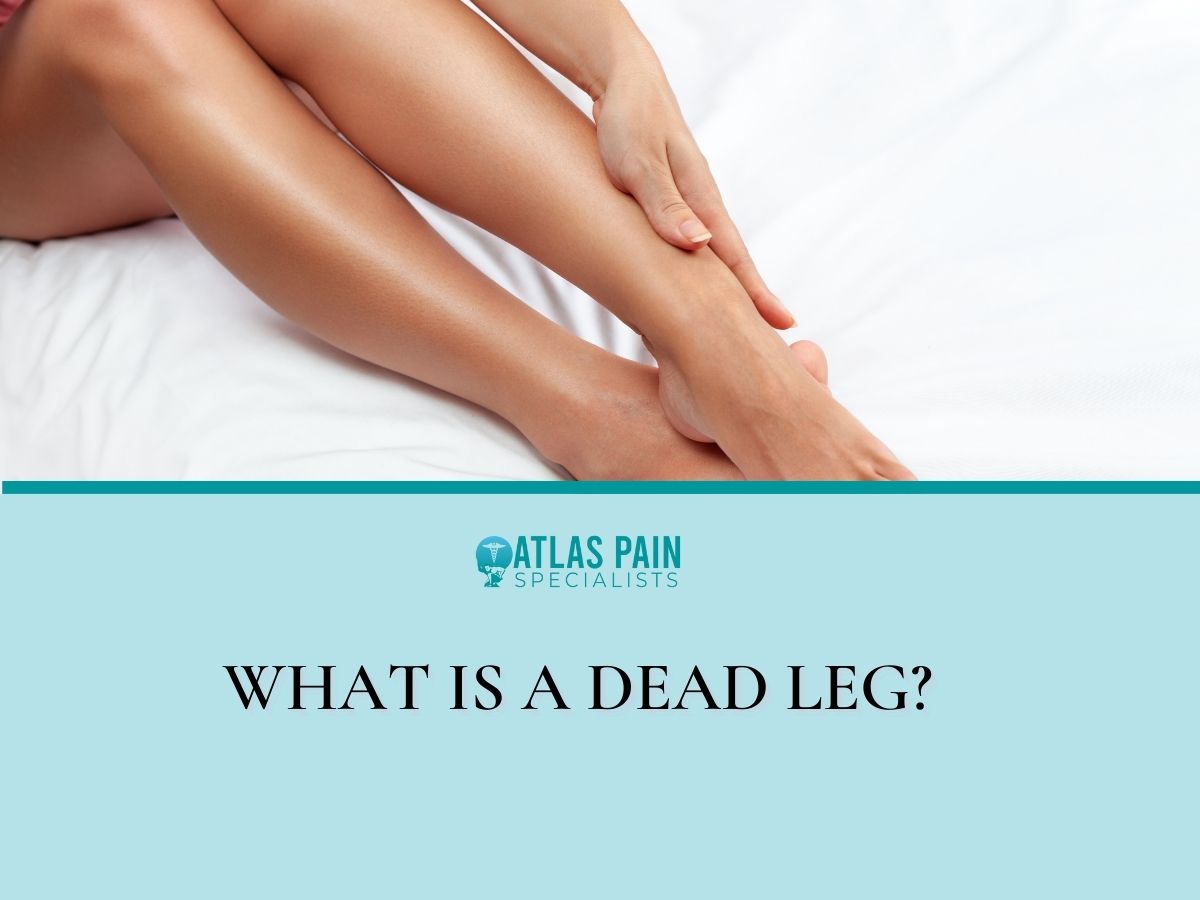

What Is a Dead Leg?
Sports such as rugby, hockey, and football all have the potential to result in "dead legs," which is especially true for those who participate in these sports regularly.
Having a good diagnosis and treatment plan in place for any sort of injury will reduce the risk of a recurrence, but it will also allow you to return to the sport you love in a shorter time.
What Is A Dead Leg?
Is there anything worse than waking up and finding you have no sensation in one of your legs? In the event of an accidental leg-on-table collision, what should you do?
Have you ever had a sprained or injured limb? One of the symptoms of this disorder is the loss of feeling in the body's extremities. You may notice a lack of movement in one or both of your limbsand your toes may also become emotionless because of this.
Corked thighs and quadriceps contusions are the most prevalent causes of a dead leg, often referred to as a "corked thigh." Traumatic injury to the muscles and surrounding tissues results in a contusion produced by the force of the hit.
Intermuscular or intramuscular hematomas are common when the quadriceps muscle is squashed against the thigh bone. Quadriceps contusions and corked hips are other terms for the same injury, which happens when the muscles in your hips are struck directly.
Intramuscular hemorrhaging is less likely to result in visible bruises since the bleeding is inside the muscle's belly. Also known as calf contusion, this injury occurs when the lower leg is injured.
Myositis ossificans may occur in the most severe instances and when the treatment is incorrect. Within muscle, bone tissue is formed. In most cases, these injuries may be treated without a lot of difficulties by using conservative methods.
What are the Causes of a Dead Leg?
1. Activity or posture

It is possible to suffer from numbness in one's legs as a sign of conditions restricting blood flow or injuring the nervous system.
Some activities, like cycling or crossing one's legs, might cause long-term strain on the nerves, resulting in transient leg numbness.
2. Damage to the Nervous System
Several orthopedic diseases may lead to limb death, from mild to severe. Nevertheless, multiple sclerosis may be a more serious illness to have.
3. Life-Threatening Illness
So, if one or both of your legs feel lifeless, it may help your doctor determine the root cause. A compressed nerve in the lower backbone, for example, might cause numbness in a single leg.
The opposite is true if you have numbness in both limbs (or other extremities) and systemic illness (that affects several body sections).
There is an urgent need for quick medical intervention, which "life-threatening" implies.
4. Injury
Numbness may result from an injury to the nerves in your torso (backbone), hip, ankle, foot, or lower leg.
5. Diabetes
Diabetic neuropathy, a kind of nerve disease, may affect specific individuals. A lack of sensation, tingling, and discomfort is the result.
6. Lower Spinal Issues and Sciatica

Numbness and sensory dysfunction may occur if you have lower spine issues such as a breakdown or a spinal herniation, which can cause nerve compression.
7. Tarsal Tunnel Syndrome
Constrictions in this area of the lower leg might cause ankle pain. A lack of sensations such as pain may also be felt. So, if your leg, ankle, and foot nerves are squeezed or injured, you may have this condition.
8. Peripheral Artery Disease (PAD)
In PAD, blood vessels in the limbs, arms, and stomach constrict, reducing the quantity of blood pumped.
Moving from one floor to another might be difficult for those with PAD since their legs are prevalent. Resting, on the other hand, may alleviate the discomfort.
9. Tumors
Some non-cancerous and malignant growths may put excessive pressure on the brains of the vertebrae of the lower legs or feet of the lower torso. It might cause numbness in your legs and feet by restricting blood flow.
10. Substance Abuse
Regular alcohol use may lead to nerve damage and numbness down one's leg and foot. Vitamin B deficiency may lead to nerve injury due to excessive usage.
11. Fibromyalgia
Inflammation, discomfort, and sensitivity are all symptoms of this long-term illness. In other cases, people living with fibromyalgia may also suffer from numbness and discomfort in several different body areas.
12. Multiple Sclerosis
Sensory nerve loss is common in people with MS, and it may cause emotionlessness in different portions of the body or limbs. Numbness like MS may only continue for a short time, yet it is powerful enough to render a person helpless.
13. Mini-Strokes & Strokes
When a stroke damages the brain, it may alter how the brain interprets and processes nerve messages. If you're experiencing numbness in your body, it's best to seek medical attention.

Signs and Symptoms of a Dead Leg

It is possible to suffer from numbness in one or more limbs alongside various additional symptoms. Symptoms, on the other hand, are determined by the core cause.
A compressed nerve in the lower backbone may cause your legs and spine to be numb if it is crushed.
Multiple sclerosis-related leg numbness may sometimes produce scorching and excruciating pain. Your signs and symptoms aid the medical team in making an accurate diagnosis.
- Numbness may cause a wide range of symptoms, including:
- Burning Sensation
- Nervousness
- Recurrent Urination
- Itchiness
- Increased leg stinging or soreness while you walk
- Pain in the lower back
- Pins-and-needles sensation
- Rashes
- Inflammation or irritability
In addition to the typical symptoms, extreme indicators may indicate a potentially life-threatening condition.
Leg numbness may be accompanied by additional troubling symptoms, necessitating immediate medical attention in certain circumstances. Among the warning indicators are:
- Difficulty breathing
- Difficulty walking
- Temporary loss of awareness
- Light-headedness
- Inability to control one's bowels or bladder
- Loss of vision
- Paralysis
- Slurred Speech
- An immediate feeling of numbness
- Weakness of Muscles
Recovery Times:
The extent of a dead leg is measured in different grades and details the length of time it would take a person to recover.
| Grade | Signs/Symptoms | Recovery |
| Grade 1- Mild | Thigh tension and minor edema are the only signs of a stress fracture. Mild or minimal discomfort with quadriceps contraction Very little to no deterioration in knee range of motion | 2-3 weeks |
| Grade 2- Moderate | Limited mobility or activity due to stiffness or discomfort. Mild to severe edema. A player cannot walk without a limp. Potential bruising Pain with quadriceps muscle contraction Inability to completely flex the knee. | Due to the increased tissue damage, a return to play is likely to take between 4-6 weeks |
| Grade 3- Severe | Unable to walk normally without crutches Crippling and debilitating pain in your thighs Swelling and bruise Muscle spasms and severe discomfort The knee's range of motion Muscle malformation may be visible. | Even with the most minor of injuries, the region of the wound may be very painful for a lengthy time. After a minimum of eight weeks, you should expect to be able to return to your sport. |
Myositis ossificans
Myositis ossificans, a more long-term severe disease, may occur in more severe instances. Bone tissue is deposited into the muscle as a result of this process. Early intervention is critical in preventing this from becoming debilitating.
Signs/symptoms:
- Excruciating pain, swelling, and bruising
- A painful lump or bump at the location of the injury;
- A significant reduction in the knee's range of motion.
- Intense muscular fatigue in the thigh muscle
- Stimulation of muscles is quite painful.
Myositis ossificans, a long-term condition, may be reversed. When the 'lump' obstructs blood flow or nerve transmission, surgery may be required in certain instances. It's not uncommon for a comeback to competitive sports to take upwards of a year
How to Prevent Dead Legs

It is not easy to defend oneself against a direct impact while participating in team sports because of its nature.
- To lessen the severity of a contusion or prevent it altogether, it is essential that you fully prepare for your sport of choice beforehand.
- When playing sports like hockey, football, or rugby, it might be challenging to stay protected against direct collisions. However, there are several things you may do to lessen your chances of being hurt.
- Ensure that your muscles are hydrated and supple by drinking enough water
- Wear proper protective and supporting equipment or padding over the thigh. Increase your muscles' resiliency by following a well-rounded strength and conditioning program.
- Participate in sport-specific training to be more prepared to take part and prevent excessive physical contact.
Assessment and Diagnosis of Dead Leg
Your physiotherapist will do a clinical assessment to evaluate the extent of your ailment. You need to know this to plan your rehabilitation and therapy.
To determine the exact location of the injury, a thorough examination of the patient's range of motion and strength will be necessary.
It is possible, but not required, to employ ultrasound scans and pictures to evaluate the extent and location of the damage.
Treatment of Dead leg
PRICE stands for Protect, Relative Rest, Ice, Compression, and Elevation, and it should be used as soon as possible after an injury.
Inflammation in the affected region will be reduced as a result of this. The next step is to consult with a physiotherapist who can do an evaluation and develop a treatment plan for you.
Your physiotherapist will be able to use a variety of therapy modalities to alleviate your discomfort, speed up your recovery, and allow you to return to your regular activities and sports. The following are examples of possible remedies:
- Soft tissue massage and acupuncture/dry needling
- Strapping and taping to provide support
- A gradual exercise treatment plan
- Strengthening exercises
- Stretching activities
- Balance and proprioception drills
- Agility training
An accurate diagnosis and rehabilitation plan are critical for a speedy and complete recovery. A myositis ossificans might develop if the patient's condition is not managed correctly.
FAQ:
What happens when you get a dead leg?
If you are hit by an item or are in a collision with another person, this might happen.
The blow strikes the quadricep muscle, causing it to shatter into pieces against the bones below. Quadriceps muscles and blood vessels are damaged as a result of this.
How long does a dead leg take to go?
When it comes to intermuscular injuries, most athletes are back in action within a few days, but recovery might take up to 2-3 weeks if the injury is serious. Intramuscular injuries take longer to heal, although very few athletes will suffer long-term damage.
Why do my legs feel numb?
You may get numbness in your leg if you sit or cross your legs for too long. That interferes with the communication between your brain and the nerves in your leg.
While the medical word for this condition is "paresthesia," most people refer to it as a "sleepy leg."
Why are dead legs so painful?
Thigh muscles (quadriceps) are crushed on the bone underneath them by impact (femur) force. The result is that the muscle and thigh are at risk of bleeding.
There is a risk of bruising and discomfort and reduced mobility as a result of this
Is numbness a problem?
A part of the body might become numb if it loses its sense of touch or sensation.
In most cases, it indicates an issue with the nervous system, although it may be seen in many other medical disorders. Nausea and numbness are not life-threatening in most circumstances.
About Dr. Sean Ormond



